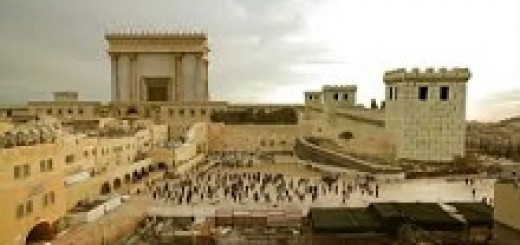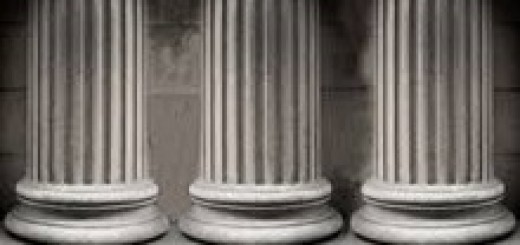By Avner Friedmann
Our Parshah, as well as four other parshahs in the book of Exodus, is devoted to the Mishkan (Tabernacle). The word Mishkan literally means a “dwelling place” and its purpose is to make space in the physical world for HaShem to dwell in, as the Midrash states about the verse[1], “They shall make a Mikdash (sanctuary) for Me and I shall dwell within them”[2]. However, is it not the case that HaShem is everywhere and that, “The entire world is filled with His glory”[3] and “No place is devoid of Him”[4]?
Of course the answer is yes. However, he concealed Himself, as it states[5], “Truly, You are a G-d who conceals Himself.” Nonetheless, HaShem’s ultimate desire in creating the physical world is that we make it into a home for Him, as Midrash Tanchumah states[6], “The Holy One, blessed is He, desired a dwelling place in the lower worlds”. This means that ultimately, HaShem’s presence will be revealed in all creation. However, until then, the Mishkan and Mikdash is the appropriate place for His presence to be revealed.
According to the Midrash[7], the ability of the Jewish people to create a dwelling place for HaShem in this world is the primary purpose of existence. The Torah repeats the details of the construction of the Mishkan several times, but why the lengthy details? According to the Holy Zohar it is to teach man about HaShem, the world and himself. The Mishkan is a model or map of the spiritual worlds. Every part of the Mishkan has a counterpart in the spiritual realm and its construction bears similarities to Heaven and Earth.
The secrets of creation[8] where drawn down in its design. This was done through the twenty two letters of the Alphabet. In a sense, these letters were the spiritual “building blocks” with which G-d created the world and the many combinations of these letters created everything that exists. As our holy books state[9], it was Betzalel who was chosen to construct the Mishkan, because it was specifically he who “knew how to join the letters through which Heaven and Earth were created”.
In addition to being the model for the universe, the Mishkan also replicates man, who is called the “little world”. Everything that exists in the world may be found in man, as scripture states[10], “Also, He placed the world in their hearts”. Therefore the entire universe is in the image of Man, so to speak, and all creatures are its branches. Just as there are 613 mitzvot in the Torah and 613 organs in man, so also, the world consists of 613 parts[11]. Because of this relationship between man, the Torah and the world, every action that man makes has a profound effect upon the cosmos.
The more we learn about the Mishkan, the more we learn about ourselves[12].The Zohar[13] states that G-d created man in the image of the worlds, both the physical and spiritual ones, as written[14]: “Let us make Man in our image and in our likeness”. The 613 organs of man correspond to the 613 parts of the Mishkan[15]. The heart of the Mishkan is the Holy of Holies. This is the center of the universe, so to speak, where creation began. The Holy of Holies receives its abundance from the spiritual Beit HaMikdash (Holy Temple) in the Heavens, wherein the Shechinah (The Divine Presence) dwells and then distributes it down to the physical to sustain the world. Therefore the Beit HaMikdash is like the heart at the center of the body, from which life and vitality is distributed to the rest of the body.
Moreover, the Beit HaMikdash is the gateway to Heaven, so to speak, through which all our prayers ascend, as scripture states[16], “This is none other than the House of G-d and this is the gateway of the Heavens”. This function of the Holy of Holies holds true even today, during Galut (exile), though the Beit HaMikdash is not standing. This is why we face Jerusalem during our prayers; because they ascend to the Heavens by way of the Holy of Holies.
Now, as known, Torah and mitzvot are eternal[17]. This means that even those mitzvot which we cannot physically perform today, have a spiritual facet to them which still applies to us. This is also true of the mitzvah of building the Mishkan and Mikdash. The verse states[18], “They shall make a sanctuary for Me and I shall dwell within them”. It does not say “and I shall dwell within it”. Rather, it says “and I shall dwell within them”, in other words, within every single Jew.
When we acknowledge HaShem, learn His Torah and perform His mitzvot, thus becoming more G-dly, it is literally as if we are building the Mikdash brick by brick, in our very hearts. When we coronate HaShem as King and make Him central in our “little world”, we advance His ultimate desire to dwell in the lower worlds. This is our ultimate and deepest purpose. It also is our greatest challenge. May it be HaShem’s will that we merit to behold the building of the third and permanent Beit HaMikdash, with the true and complete redemption, through our righteous Moshiach, speedily in our days, Amen[19].
[1] Tanchuma Nasso 16.
[2] Teruma 25:8.
[3] Isaiah 6:3.
[4] Tikunei Zohar 122b.
[5] Isaiah 45:15
[6] Tanchuma Nasso 16
[7] Ibid
[8] Zohar Pikudei 231b.
[9] Berachot 55a, Rashi there, and Midrash Rabbah Bamidbar 12:12-13.
[10] Ecclesiastes 3:11
[11] R’ Chaim Lutzato in Kina’at HaShem Tsevakot p.3.
[12] Zohar Shalach 162b, Zohar Teruma 374.
[13] Zohar Shalach 161b, Zohar Tetzaveh 181a,Tanchuma Pikudei 3, Netivot Shalom Teruma 190.
[14] Beresheet 1:26.
[15] Teruma 162b.
[16] Genesis 28:17
[17] The thirteen principles of faith of Maiminoides, principle #9
[18] Exodus 25:8
[19] Additional sources: Zohar Pikudei 221a, Malbim Shemot 22:1&25:8, Mima’amakim Shemot and the Holy Alsheich.






















